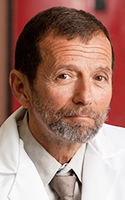Winter is prime time for seasonal affective disorder. Here’s what you need to know
By Ernst Lamothe Jr.

It often doesn’t get the attention it deserves, but seasonal affective disorder victims know the truth. They understand the condition is real and can alter their mood and behavior for months at a time. Called SAD, it is a seasonal mood disorder related to reduction of light, which happens during the winter months. It can affect between 4 to 6 percent of Americans, according to the American Association of Family Physicians. Another 10 to 20 percent have been diagnosed with a mild version of the condition.
People who live in places that rain for weeks at a time or who live in cloudy cities such as Buffalo are often most vulnerable.
SAD doesn’t always fall under the same umbrella symptoms as general mental health depression but can look very similar.
“Seasonal affective disorder is a common problem where people can feel sluggish and depressed during the winter because there are more cloudy and overcast days, said physician Steven Dubovsky, professor and chairman of psychiatry department at University at Buffalo. “It is a sensitive issue that people have a hard time talking about because others don’t see it as serious issue but it is.”
Here are six facts about seasonal affective disorder.
1. Nothing to do with cold weather
The drop in temperature in the winter is sometimes associated with SAD. In actuality, it has nothing to do with the temperature.
“You will hear people confuse seasonal affective disorder and combine that with simply winter blues or the holiday blues but that is not the case,” said Dubovsky. “It is deeply associated with the lack of sunlight.”
Dubovsky said the condition typically begins in September in the northern hemisphere and could last until April and May depending on where you live.
2. Why you should buy artificial light
The most effective way to battle through SAD and depression is light therapy. The body needs light, and many times, during the winter, cloudy and cold days produce an inability for that to occur. Dubovsky recommends purchasing an artificial light therapy lamp. Those with fluorescent lights are the most effective.
“When you are looking directly into the light and the light reaches your eyes, it can be the necessary light you need to absorb to change your mood and combat depression,” said Dubovsky
The average living room has 100 lux as a unit of light flow, while a sunny day measures between 20,000 to 100,000 lux. The average light therapy box that someone purchases is about 10,000 lux, which is akin to being outside on a cloudy day.
“It has been known to have quite a bit of success for people. It can help you if you feel lethargic,” said Dubovsky. “People generally use the light in the morning for a half an hour. That amount of exposure makes an incredible difference in the lives of people who suffer from SAD.”
3. Watch for worsening symptoms
Some people might feel helpless when the condition hits them. Or they just think because this happens regularly to them that they should just survive through it. Dubovsky believes that because seasonal affective disorder affects each person differently people should not just go on with their lives as usual.
“If you see the light is not working, and you know you continue to get depressed as soon as the fall hits, then you should consult with someone and continue to find ways to combat it,” he added. “I especially advise that for people who have a family history.”
4. Women suffer more than men
The population who is affected the most by SAD is women. The latest statistics say women are four times more likely to develop the condition than men. They make up more than 70 percent of those who suffer and the age ranges from 18 to 55 years of age. Experts have said it is due to the serotonin levels which are affected by things like menopause and PMS.
5. Antidepressants work
Dubovsky said there are prescription medications that can help with serotonin levels in the brain. The biggest reason why that is an asset is because when we don’t produce enough serotonin, we can become depressed. Antidepressants — such as Prozac and Zoloft — can often raise serotonin levels. It can be a successful temporary use but physicians do not recommend it long term.
“It has been known to really combat seasonal affective disorder,” said Dubovsky.
6. Consider exercising
With any health issue, medical officials see holistic, non-prescription options as viable. Exercise falls into that category. Walking outdoors especially in the morning hours is recommended. If this isn’t possible, consider going to the gym and get your body moving. You raise the endorphins in your body which helps you feel happier. It combats the feelings of sadness or anxiety you’re experiencing and allows you to concentrate better. But that does come with a caveat.
“The hard part about recommending exercise is that it works if you are motivated. But people who are severe suffers of SAD often don’t have the motivation to do much because of the depressed feelings and that includes the motivation to exercise,” Dubovsky added.
